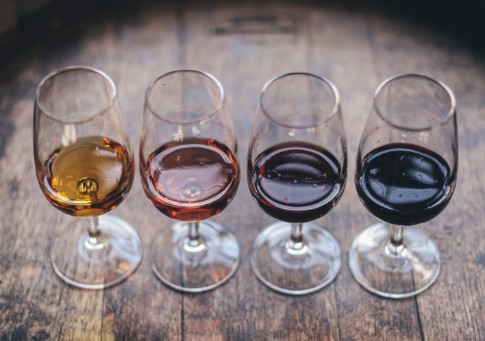
How Sweet Life Is!
Sweet wines are often overlooked. Once prized for being some of the most rare and expensive wines in the world, these specialty beverages are perfect for the winter.
To learn more read below or, find our article in the Idaho Press here…
————
Sweet wines are one of the wine world’s oldest, and currently most overlooked, wine categories. Meant to be served with dessert or in place of it, sweet wines have high levels of sugar but are also full of concentrated aromas and flavors. These aromas and flavors along with the retained sugar make for intense, and unusual wine styles. By learning about the way in which the grapes accumulate sugar, we can understand the style and quality of the finished product.
Sweet wines have high levels of sugar due to one of four main reasons: late harvesting, freezing on the vine, drying, or botrytis. Grapes that are harvested late are those that remain on the vine past the typical parameters of ripeness. These grapes become concentrated and build extra sugars. Examples of these wines include “Auslese” wines from Germany as well as “late harvested” wines. While not as sweet as other dessert wines, Hogue’s Late Harvest Riesling showcases these ripe peach, melon and candied apricot notes with ample sweetness at an affordable $9 price point. This wine is perfect for those looking for an easy to enjoy sweet wine.
Grapes that are frozen on the vine also become concentrated with more robust flavors, acids, and of course, sugars. Ice Wine or Eiswein in Germany is produced this way. A great local option is Koenig Vineyard’s Ice Wine. Priced at a very reasonable $26/375mL, this wine overdelivers with rich apricot, peach, and a citrus zest finish which contrasts the lusciously sweet palate. It is delicious with shortbread cookies!
Picking grape clusters and drying them on mats in protected rooms or outside in direct sunlight is another way to concentrate grape components. These wines include traditional Vin Santo from Italy known for its amber color, rich, full body and nutty and dried fruit character as well as Recioto wines from northeastern Italy. Straw wines from various producers across the globe are a wonderful option as well as are the decadently rich Pedro Ximenez wines from Southern Spain. One of my favorites is the Badia di Coltibuono Vin Santo. It’s the perfect mix of dried cherry notes with a pleasantly nutty, rich finish. While a bit of a splurge at $45/375mL this wine will take your dessert pairing to the next level.
Botrytis or “Noble Rot” is the last main way grapes can accumulate additional sugar while on the vine. This fungus attacks grapes and makes small pinpricks in the skin allowing for the evaporation of moisture and you guessed it, concentration of sugar, acids, and flavors. The world’s most famous dessert wines such as the tropical and rich Sauternes from Bordeaux, France and Tokaji Aszu from Hungary are both examples with distinctive Botrytis impact. These are some of my favorite dessert wines and Royal Tokaji’s Red Label at $60/500mL bottle is an elixir that is both a treat and a treasure. The mouthwatering acidity perfectly balances with the high sugar level thereby enhancing the notes of ginger and orange marmalade found in these wines.
Sweet, dessert-styled wines are a perfect pairing for holiday desserts or on their own. With their luscious styling and concentrated fruit notes, they overdeliver on flavor and value. This holiday season consider treating yourself with a small glass of sweet wine by the fireplace after dinner. It’s sure to warm you up and pair beautifully with a bevy of holiday desserts. Cheers!
The Aftertaste: Sweet wines are served in smaller portions (and glasses) due to their extreme richness and intensity. Just like fine chocolate, these wines are meant to be slowly savored and enjoyed!